Hi-Fi Hall of Fame
Business Inductee
Lafayette Radio Electronics
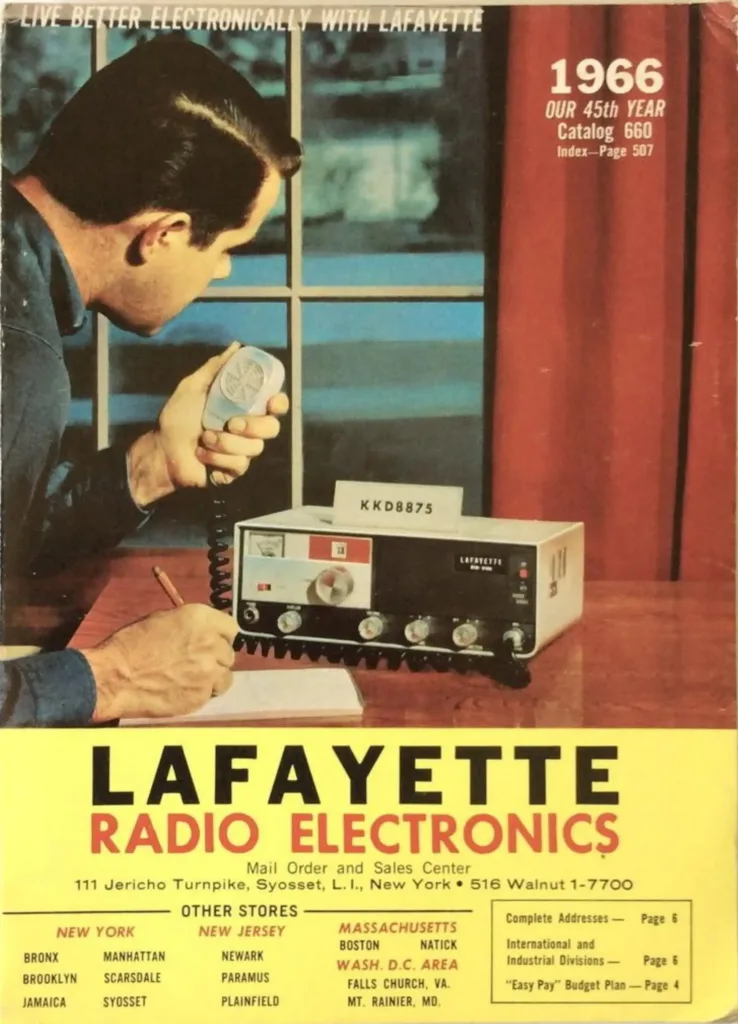
Introduction
Lafayette Radio Electronics was an iconic American retailer that, for many people, was the first place where they saw and heard a real “Hi-Fi” system.
Lafayette started out as a shop called “Wholesale Radio Service” in the early 1920s. Founded by Abraham Pletman in New York City, they supplied radios and electrical components to early hobbyists. They started selling “Lafayette” branded radios in July 1931.
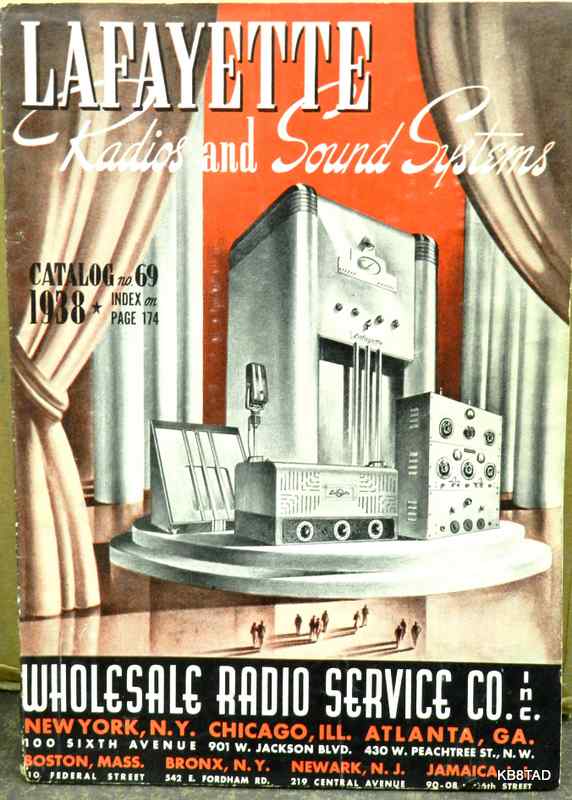
The business grew and in 1948 the company issued a catalog under the name “Lafayette Concord” and called itself the “world’s largest radio supply organization”. By 1952, the annual catalog was issued using only the Lafayette name.
Lafayette Radio Electronics soon became a thriving mail-order catalog business. Most of their business was selling electronic components for amateur radio operators and electronic hobbyists in areas where such components were unavailable in local retail outlets, but by 1953, Lafayette was starting to offer High Fidelity equipment from companies like Stromberg-Carlson, University, and Bogen. Their main competitors were Radio Shack, Allied Radio, Heathkit, and local Hi-Fi dealers throughout the United States.
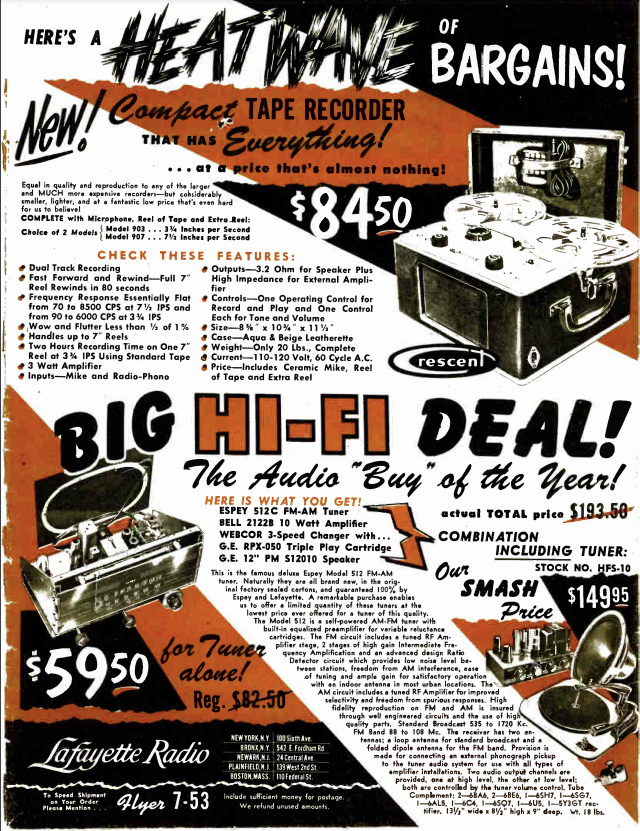
Key Facts
| Name | Lafayette Radio Electronics |
| Category | Electronics Retailer |
| Founded | 1931 |
| Closed | 1981 |
| Keys to Success | Large, detailed catalog Retail stores with sound rooms to demonstrate Hi-Fi systems High quality, affordable Original Equipment Manufacturer (OEM) products sold under the Lafayette and Criterion brands |
What made Lafayette Radio Electronics Successful
In the post-World War II era, Lafayette Radio Electronics experienced rapid growth, capitalizing on the rising interest in consumer electronics. The company not only supplied a wide range of electronic components but also developed their own line of audio equipment, radios, and amateur radio gear. Lafayette became synonymous with quality and innovation, releasing products that appealed to both amateur enthusiasts and professional users.
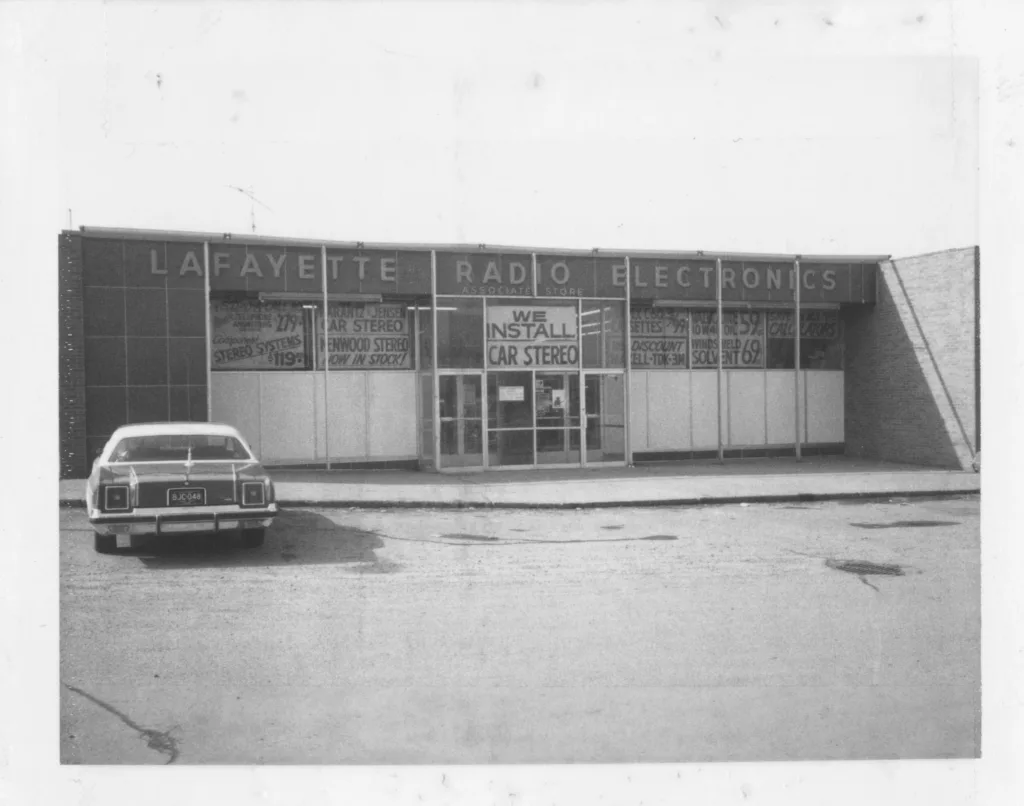
One notable innovation from Lafayette Radio Electronics was the introduction of the “Lafayette Radio Transistor Kit” in the late 1950s. This kit allowed individuals to build their own transistor radios, democratizing access to cutting-edge technology and sparking a “Do It Yourself” (DIY) revolution. The kit was a tremendous success, and Lafayette continued to provide educational resources and kits for aspiring electronics enthusiasts.
Lafayette Radio Electronics became deeply ingrained in the amateur radio community, also known as “ham radio.” They offered a wide range of equipment, including transceivers, antennas, and accessories, catering to the needs of amateur radio operators. The company’s commitment to supporting this community extended beyond product offerings. Lafayette sponsored events, organized contests, and published a popular magazine, “Lafayette Radio Review,” which provided valuable information, articles, and project ideas to radio enthusiasts.
During its prime, Lafayette Radio Electronics published catalogs that featured a wide range of electronic equipment, including radios, televisions, audio systems, ham radios, components, and accessories. These catalogs typically included detailed product descriptions, specifications, and prices. They were often eagerly awaited by electronics enthusiasts and customers interested in purchasing from Lafayette Radio Electronics.
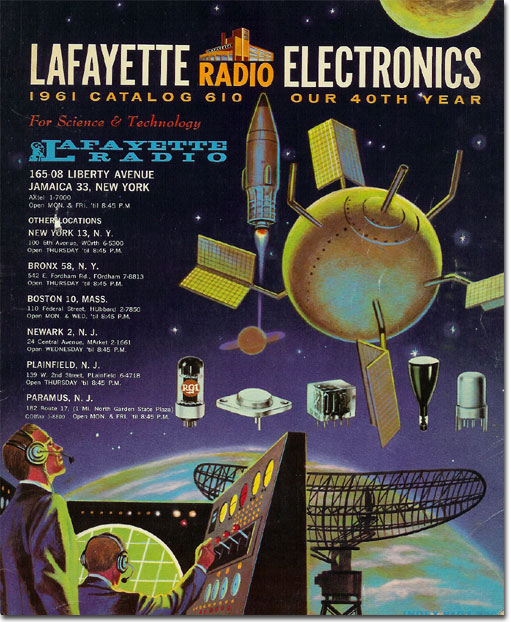
Lafayette’s products ranged from individual resistors, capacitors and components to stereos and two-way radios for amateur radio, Citizens Band (CB) radio enthusiasts, and shortwave listeners. Many were dedicated types with special functions, such as VHF receivers for police and fire channels built into a CB radio. The company’s best selling products were often shortwave receivers, parts, and portable radios. In the 1960s, many Lafayette brand radios were rebranded Trio-Kenwood sets.
In the 1960s and 1970s, Lafayette offered a range of hi-fi equipment that was manufactured by a Japanese subcontractor named “Planet Research”. “Criterion” brand speakers were built by several offshore and some domestic assemblers.
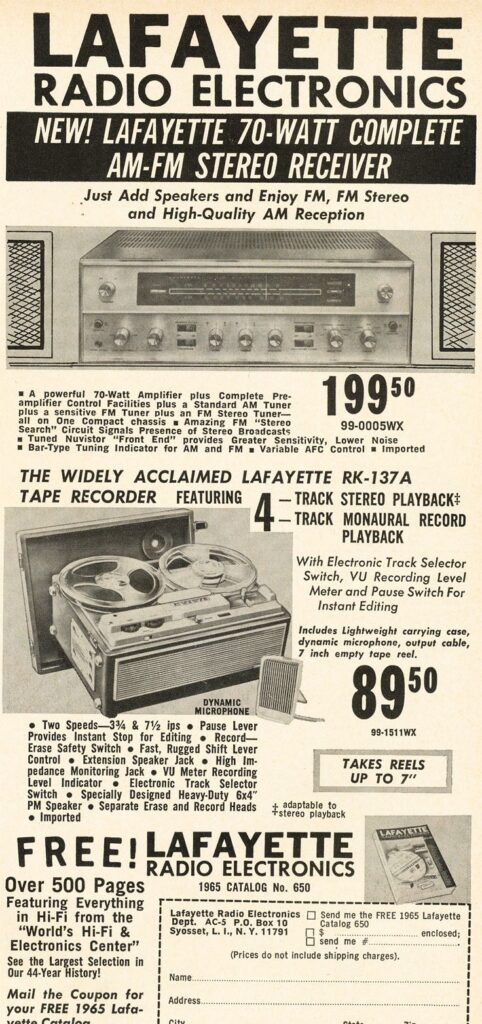
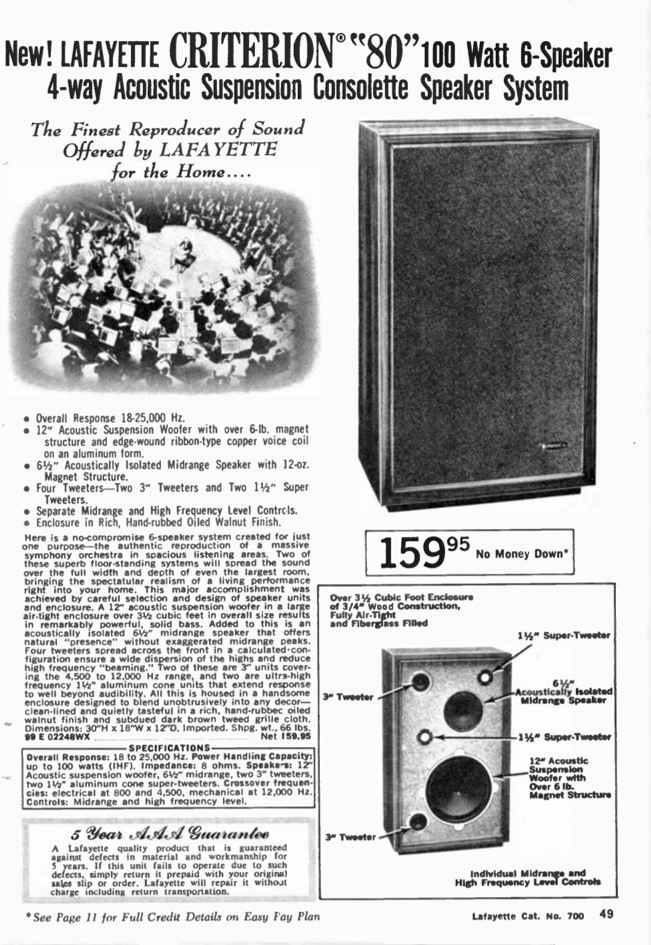
The company distributed thousands of free catalogs filled with descriptions of vast quantities of electronic gear, including microphones, speakers, tape recorders, and other components. While the catalog heavily promoted their own branded products, Lafayette also carried models from many other Hi-Fi manufacturers of the era, including Marantz, Fisher, Pioneer, Sansui, AR, Dynaco, KLH, Wharfedale, Bozak, BIC, BSR McDonald, Garrard, Dual, TEAC, Akai, Shure, Empire, Pickering, Electro-Voice, JVC, Panasonic, Sony and others.
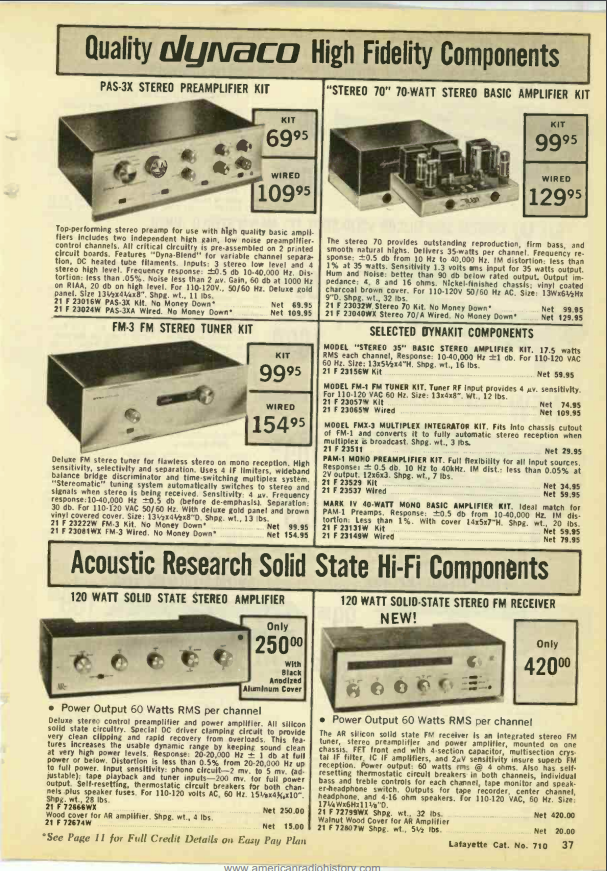
The catalogs and advertising helped promote the concept of high-fidelity sound to customers, some of whom lived many miles away from major electronics stores, during a time when only the largest urban areas had dedicated “stereo” stores. Lafayette also advertised heavily in major U.S. consumer electronics magazines of the 1960s and 1970s, including those aimed at Hi-Fi enthusiasts: Audio, High Fidelity, and Stereo Review.
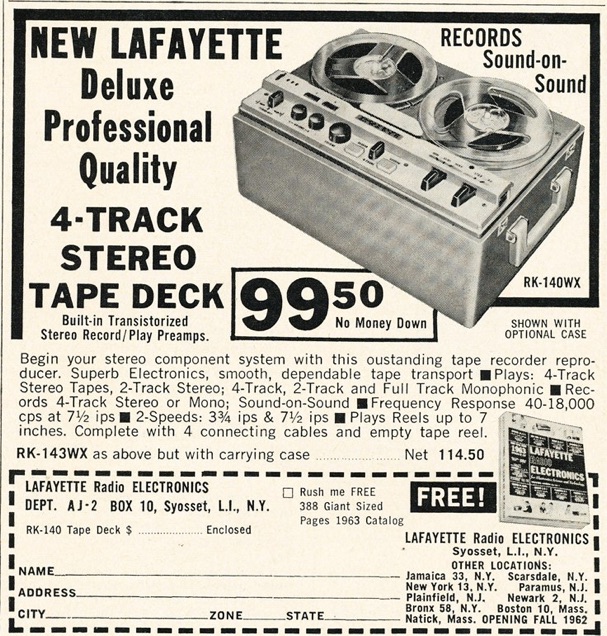
Another key to success was that Lafayette was quick to jump on industry trends, embracing first open reel tape recorders and later 8-track cartridge recorders and compact cassette recorders, along with an array of gimmicks, supplies, and accessories. During the mid-1970s, the company’s stores were one of few places one could actually experience four channel (“quadraphonic”) sound.

Lafayette’s Demise
By the late 1970s, Lafayette had expanded to major markets across the country, but struggled to compete with larger rivals such as Radio Shack. Lafayette ran into major financial difficulty when the Federal Communications Commission (FCC) expanded the Citizens Band radio (“CB”) spectrum to 40 channels in 1977. Lafayette’s buyers had firm commitments to accept delivery of thousands of older design units capable of only 23 channels, and were not able to liquidate the inventory without taking a serious loss. Eventually, all of the old CB radios were sold at a substantial loss.
With fewer than 100 stores, far fewer than Radio Shack’s thousands of local outlets, Lafayette Radio remained more of a dedicated enthusiasts’ store than a mass marketer. The company was also hurt by the advent of electronics retailers relying on aggressive marketing techniques and competitive pricing in the late 1970s. The company filed for bankruptcy in 1981 and most Lafayette stores in the state of New York were closed or sold to a competitor called “Circuit City”.
Although Lafayette Radio Electronics ceased operations in the 1980s due to various challenges in the consumer electronics market, its legacy lives on. Many vintage Lafayette products are still sought after by collectors and enthusiasts, serving as a testament to the brand’s enduring quality and impact. Lafayette’s influence can also be seen in the continued popularity of amateur radio and the DIY electronics movement, where individuals build and experiment with electronic devices.
Induction to the Hi-Fi Hall of Fame
Lafayette Radio Electronics holds a special place in the history of consumer electronics and in the Hi-Fi community. The company’s dedication to innovation, affordable pricing, and community-building shaped the industry and inspired generations of electronics enthusiasts. Lafayette’s legacy continues to resonate, reminding us of the power of innovation, the joy of hands-on learning, and the enduring spirit of the enthusiast culture.
For their years of service and commitment to the community, Lafayette Radio Electronics is inducted into the Hi-Fi Hall of Fame.
